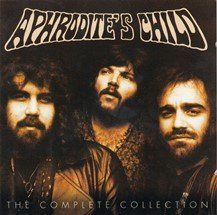.
The Morrigan is also a shapeshifter. She presents herself traditionally as either a beautiful maiden, a striking warrior-queen, an old hag, or a crow. She does not cause death or control it; rather, she is an omen either of its impending arrival or its presence. The Ulster Cycle, one of the four great cycles in Irish mythology, contains stories about the Morrigan as she plays her part in the lives of the great heroes and warriors in what is now the Ulster province of Ireland. While the story's main focus is around King Conchobar, ruler of Ulster, his nephew Cú Chulainn also features prominently and he had direct conflict with the Queen of Death herself.
The Cattle Raid of Reggmin
Warrior Cú Chulainn has just finished going on a cattle raid when he encounters a woman in the forest with a heifer. Believing it to be one of his conquests, he accuses her of stealing it from him. When the woman reveals herself to him as the Morrigan, he recognizes her and immediately apologizes, but she warns him that his disrespect has already sealed his fate.
The Cattle Raid of Cooley
The Morrigan appears before Cú Chulainn again as he is on his way to another cattle raid and declares her love for him. He rejects her and rides off to fight. The goddess is angered by the rejection and decided to get revenge. She implements her plan as the soldier battles opponents at the ford of Áth Traiged. Here, she appears to him and threatens him but he remains undeterred, First, she appears as a wolf and causes a cattle stampede. When Chulainn manages to outmaneuver the stampede, she transforms into an eel and attempts to trip him so she can trap him with magic, but she is unable to get close enough. Eventually, Chulainn managed to injure the Morrigan, gashing her in each arm. She overcomes these injuries later, when she shapeshifts into an old woman milking a cow by a river. There, she manages to trick Chulainn into blessing her for three sips of milk. Ultimately, Chulainn is fatally injured in battle. He has his warriors tie him to a stone so that he will die upright. They know he is dead when a crow (the Morrigan) lands on his shoulder.
Following Carr's inclusion of Irish tradition, Woman and Scarecrow contains many references to Catholicism, either through talk of tradition or artistic imagery. Between the years 1601 and 1606, artist Michaelangelo Caravaggio was one of the most sought after painters in Rome; he was flooded by commission after commission. At the beginning of his heyday, he was commissioned to create a painting by a lawman in the Vatican to be hung in the church of Santa Maria della Scala. Having completed the masterpiece five years later, the Carmelites at the church saw the painting and promptly rejected Caravaggio's rather unholy representation of the Virgin Mary. This painting does not depict Mary as most would imagine–regal, haloed, and beatified. Instead, she lays on a bed with her eyes closed, her arm hanging to one side as she dies. She has been made sacrilegiously human, surrounded by Mary Magdalene (in the orange dress) and the holy apostles who watch in darkened reverence as her faint halo fades away.
This was not the painting the clergy were expecting as it flies in the face of the Assumption. This Catholic tenet states that Mary did not die, but was assumed into heaven. Another point of contention may have been that the painting shows the Virgin Mary with her feet and part of her legs bared, which was considered inappropriate, especially for a sacred figure. Still another was the rumor that Caravaggio usd a known prostitute as the model for Mary. While these qualities caused the church to reject it, they intrigued other art enthusiasts. It was first owned by the Duke of Mantua before it wound up in the private collection of King Charles I of England. It finally found itself in the Louvre art collection, where it can be seen today.
Woman's favorite artist, Demis Roussos, was a Greek progressive rock musician. His father was a musician and his mother was involved in theatre. He joined the band Aphrodite's Child in 1967, featuring Vangelis Papathanassiou on the keyboard and flute, Loukas Sideras on drums and vocals, Silver Koulouris on the guitar, and Demis Roussos on bass, vocals, and guitar. This psychedelic rock band's fame began when they moved to Paris and signed on with Mercury Records. "Rain and Tears", their second single, became a sensation in France and many other European countries, winning a gold disc for surpassing one million sold copies. That same year, they released their first album, End of the World. They began touring, releasing a second album three years later, and even recording music for film. In 1970, however, keyboardist Vangelis wanted to continue the progressive music while the original group wanted to produce more traditional pop music.
They disbanded as a result and Roussos went on to establish his own solo career that was arguably even more successful than his collaborative music. His first single, "We Shall Dance" was a hit, making the top ten in the Netherlands and in Belgium in 1971. Five years later, his single "My Friend the Wind" was No. 1 in the UK singles chart. Roussos continued to produce hit singles well into the 80s and 90s, including "Ever and Ever", "Velvet Mornings" and "Insight". He then went on tour in England with the best of his hits in 2002. He sang in French festivals, guest sang in Greek churches around the world, and even released one last studio album before his tragic death from cancer in January 2015.





